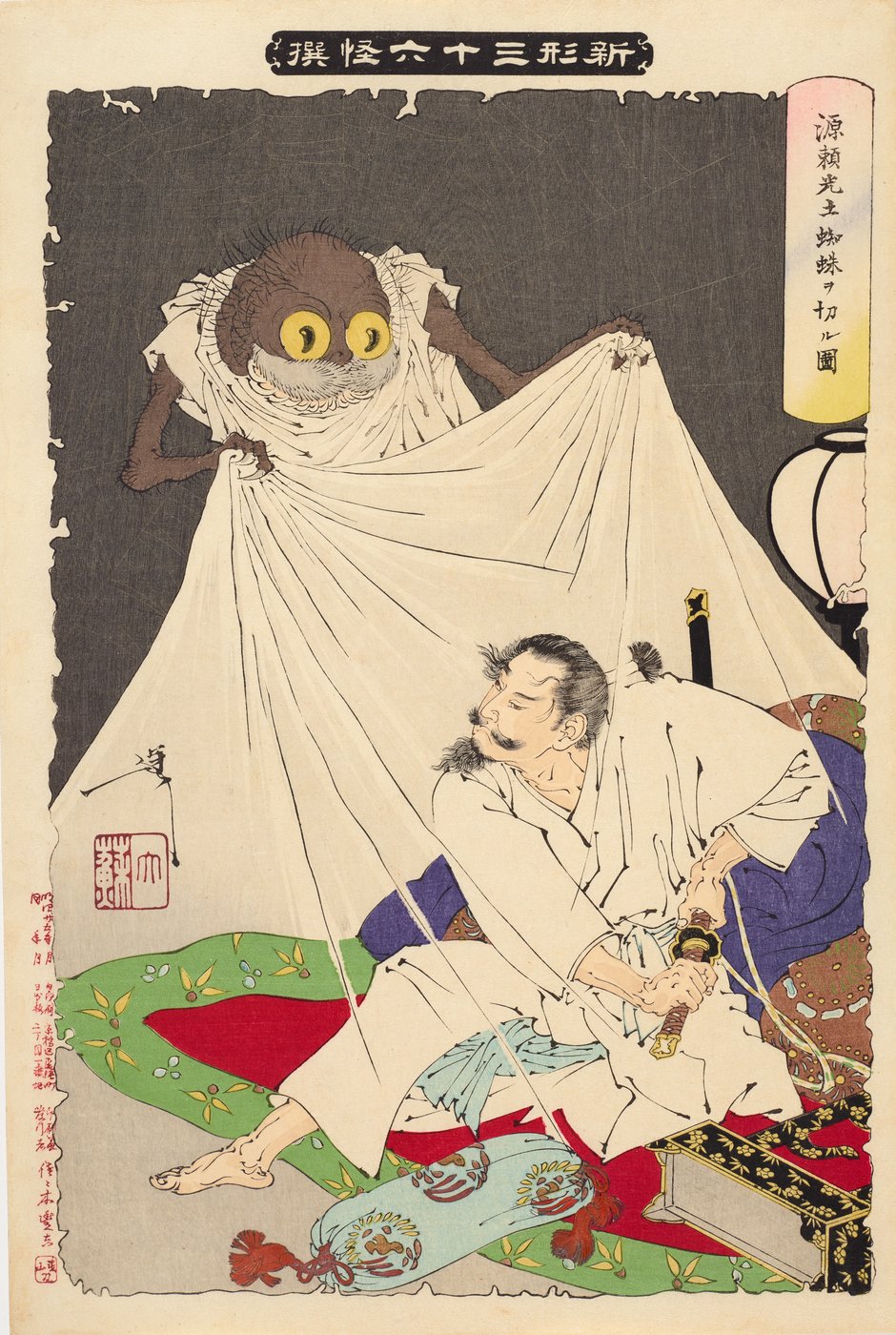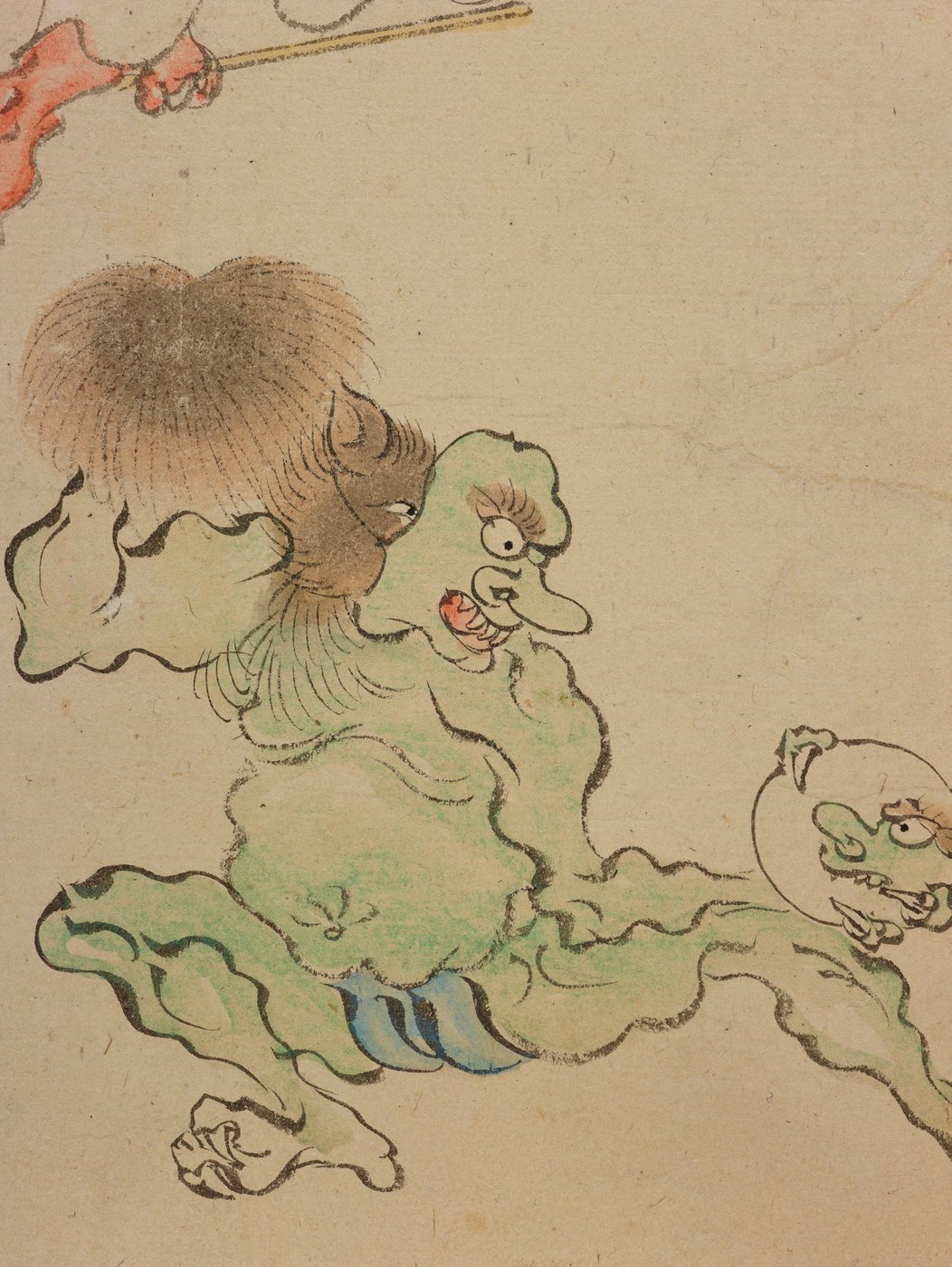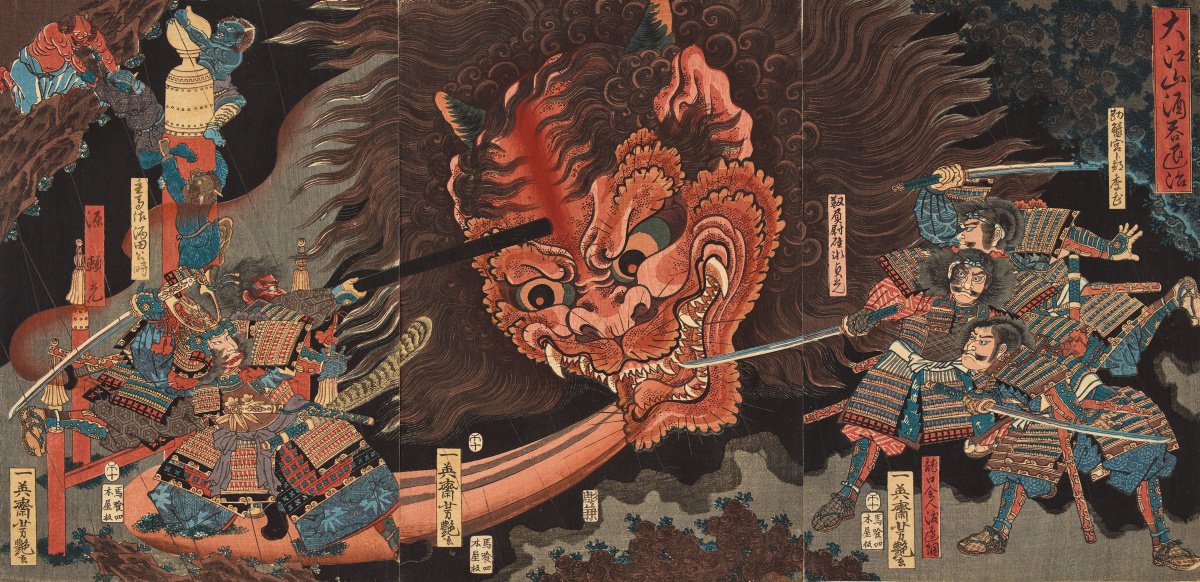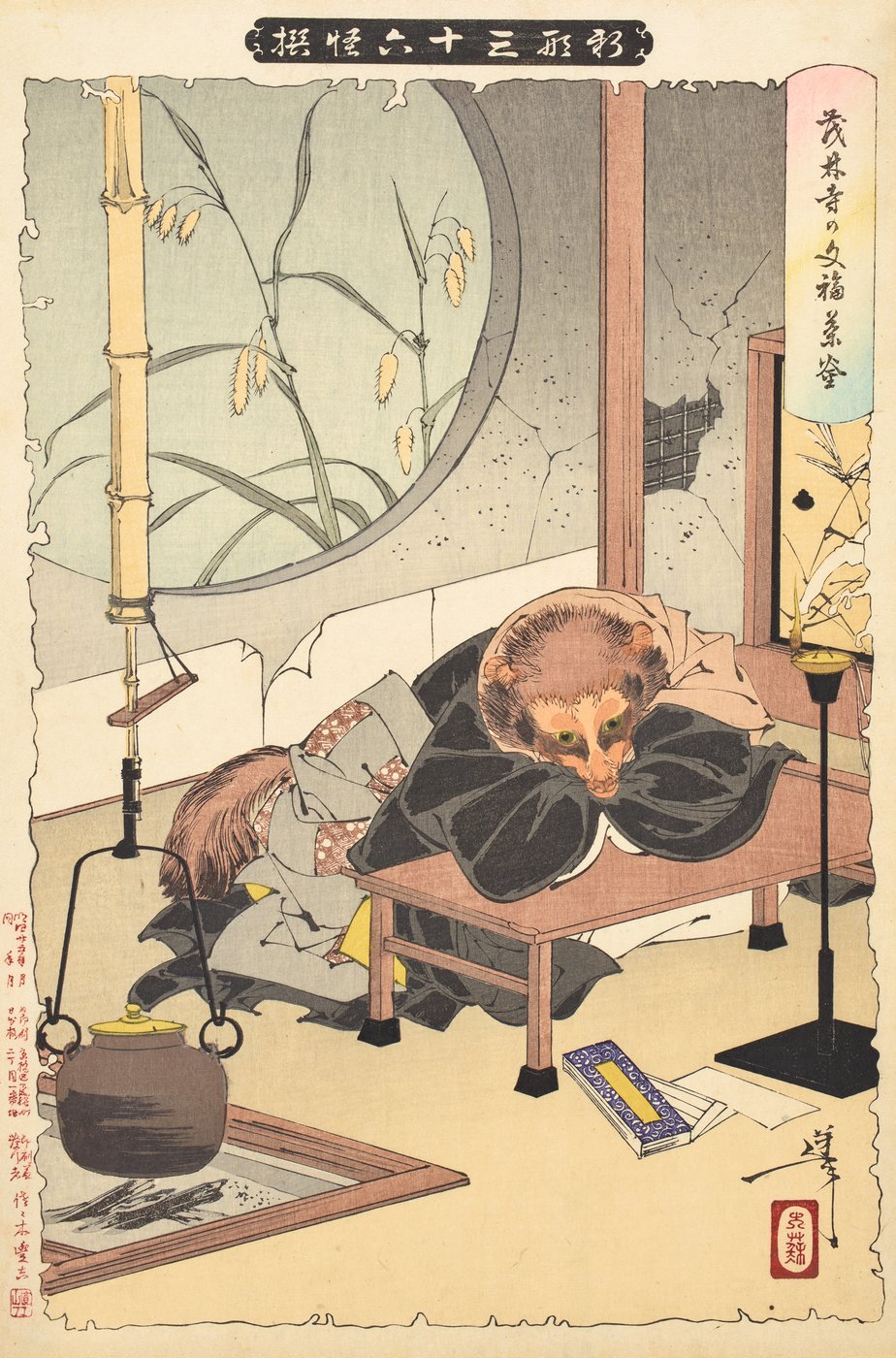Menu
Japan supernatural
2 Nov 2019 - 8 Mar 2020
Yōkai and Yūrei
Yōkai and yūrei
Known by many names over time, supernatural beings are most often described as yōkai, while ghosts are called yūrei. Some yōkai are monstrous, others take human or animal form, and many are objects that have come to life. Such mystical creatures add richness and wonder to daily life and help to explain unusual events and experiences. Step inside to encounter strange yōkai and spinechilling yūrei in Japanese art from the past and present.

Tsuchigumo (Earth spider)
The tsuchigumo, or earth spider, is a cave-dwelling yōkai often shown battling with samurai. One of the earth spider’s best known conflicts was with Minamoto no Yorimitsu (948–1021). Also known as Raikō, he was a nobleman who worked with his retainer Watanabe no Tsuna to rid Kyoto of its demons. One night, a feverish Raikō believed he was being attacked by monsters and called for protection, but when his attendants fell asleep, Raikō was attacked by a giant earth spider. His weak cries and a trail of blood attracted Watanabe who used an uprooted tree trunk to kill the enormous spider. Once the spider was vanquished, Raikō made a full recovery. Tsukioka Yoshitoshi’s image shows the delirious Raikō fumbling for his sword while the spider lures him into its web. A famous print Raikō and the earth spider by Yoshitoshi’s teacher Utagawa Kuniyoshi from around 1843 was interpreted as a critique of the Tokugawa government and was banned.

Kitsune (Fox)
Kitsune are magical foxes who can transform into humans, especially beautiful women. They are often cleverer than the humans they encounter and can be rather malicious. The netsuke of a dancing fox is only 7.5 cm tall. Yoshitoshi’s woodblock print Musashi Plain moon, from the series One hundred aspects of the moon shows a female fox gazing at her moonlit reflection as she prepares to transform into a woman.

Oni
Big and muscular with horns and red, green or blue skin, oni are powerful demons who are often frightening but can also be comical. In an old tale, wild oni were causing havoc in Japan. No one could stop them until Momotarō, a little boy born from a giant peach, travelled to the island of the onis. Accompanied by a talking dog, a monkey and a pheasant, Momotarō conquered the demons. Itaya Hiroharu’s Night procession of the hundred demons (Hyakki yagyō) shows numerous oni enjoying a raucous parade.

Shuten-dōji
The famous story of Shuten-dōji (drunken demon) is one of Japan’s most gruesome legends. It deals with tales of good and evil and the actions of the heroic character Minamoto no Yorimitsu (Raikō). Originating in the Heian period (794–1185), the story describes a demon who kidnaps and cannibalises young maidens in Kyoto with the help of his oni assistants. Impersonating Buddhist monks, Raikō and his four loyal attendants enter Shuten-dōji’s lair by enticing the demons with rice wine. This image shows Shuten-dōji’s fuming decapitated head in battle, as the rest of the demons try to escape the conflict.

Tanuki (Raccoon-dog)
This is the story of a tanuki (raccoon-dog) that turned itself into a teakettle to thank a woodcutter who rescued him from a trap. The woodcutter sold the kettle to a temple but it did not like being cleaned or heated. It became so annoyed it turned back into a tanuki and tried to escape. In one version of the story, the tanuki returned to the woodcutter who had become an entertainer and helped him make money by dancing and doing tricks. In another, the monks realised the kettle was special and awarded it a life of comfort and ease. Wearing a priest’s robe, here the lucky tanuki is shown napping in the temple. The presence of the kettle is a reminder of his past.

Oiwa
Oiwa, star of the Yotsuya ghost story, is one of Japan’s most famous spectres. Though this scene of her feeding her infant appears tranquil, the snake-like cloth draped beside her is a sign of things to come. Oiwa was later poisoned by her neighbour Oume who coveted Oiwa’s husband, Iemon. The poison disfigured Oiwa’s face such that Iemon could not stand to look at her. His cruelty drove Oiwa to suicide. When a servant chastised Iemon, he murdered him and nailed them both to a plank and threw it in the river. Iemon married Oume but, when he lifted her wedding hood, it was Oiwa’s face he saw. He then murdered his new bride and her father, who he mistook for the dead servant, before drowning himself.

Okiku
Okiku was a housemaid who rejected the attentions of her employer, the samurai Aoyama Tessan. In one of many versions of the story, Aoyama hides an imported Dutch plate and blames her for its loss. Shamed by the accusation, Okiku drowns herself and her distraught ghost returns each night to haunt Aoyama. He is eventually driven mad by her visits. Toyohara Kunichika has dramatically captured the horror of Aoyama and his retainer below the serpentine movement of Okiku’s ghost.

